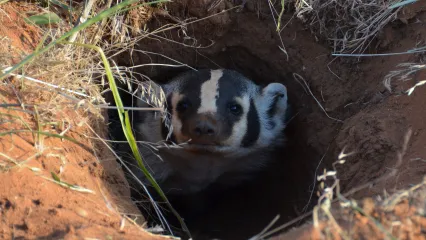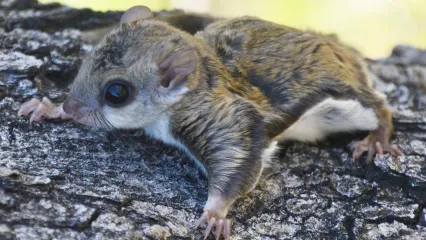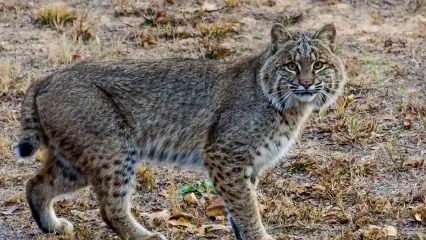
Description
The badger (Taxidea taxus) is a stocky, masked mammal with light-colored fur, an upturned nose and long claws that help with burrowing. The badger has a white stripe on its nose that extends back to its shoulders, often partially bordered by black fur, and black patches on the front of its ears.
Badgers are notorious diggers and fighters, though they tend to retreat unless repeatedly threatened. It has strong jaws, sharp claws and loose skin, making it a difficult prey for most Oklahoma predators.
Unlike some mammals, badgers remain active all year long, but fatten up during the fall to survive the potentially harsh winter months. Badgers are members of the weasel family and feed on small mammals whose burrows can easily be dug up. They will also feed on insects, crawfish and snakes.
Size
Badgers are 25-30 inches in length, and their light color is dappled with yellowish fur.
Habitat
They can be found in the western portions of the state, particularly in agricultural areas where soil is deep and easily burrowed. Badgers live in dens that are dug deep into the ground, sometimes six to eight feet deep. Den tunnels can be long as well - sometimes up to 30 feet.
Life Cycle
A badger's den consists of multiple passageways and "rooms," or chambers, where they raise young. Breeding takes place during the summer, but offspring begin developing late in the winter. Anywhere from one to five offspring are born fully furred, blind and dependent. About a month after birth, the offspring's eyes are opened.
How To Observe
Badgers are not a particularly social animal and are often spotted alone.

